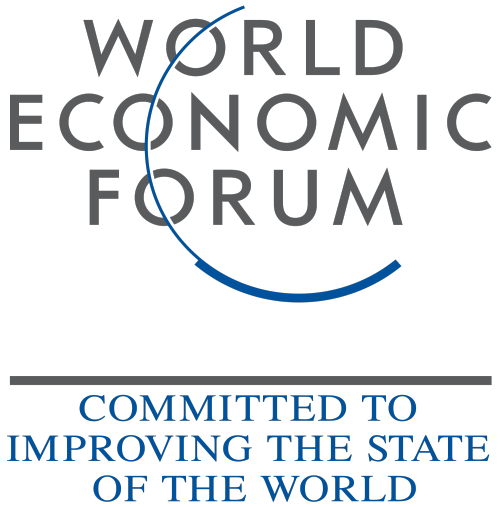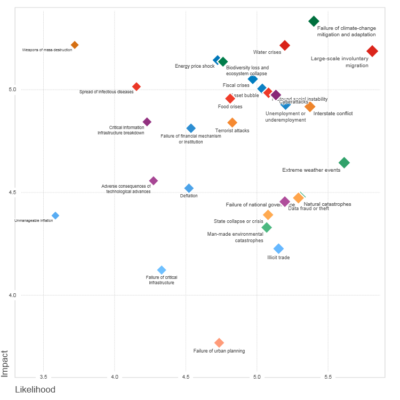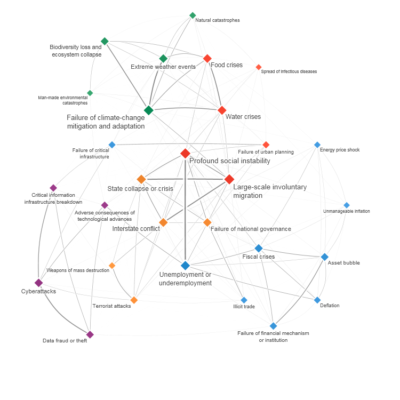

Energy
Jupiter’s Charlie Thomas: Joining the Dots Between Climate Change and Strategic Risks
The World Economic Forum’s (WEF) 11th annual Global Risk Report named “failure of climate-change mitigation and adaptation” as the top global risk for 2016 and beyond, making a case for linking this to other high-ranking risks such as “large-scale involuntary migration” and “water crises”.
The findings reflect a shift in perceptions, to the point where an understanding of the link between these risks should inform political and investment decisions for years to come, according to Charlie Thomas, manager of the Jupiter Ecology Fund.
The release of the 11th edition of the WEF’s Global Risk Report was one of the most compelling aspects of this annual summit in Davos. This insightful report, which shows the results of a survey of 750 WEF members, sent a clear message: climate change risk is now understood as one of the key long term risks faced by the global economy in terms of its perceived likelihood and economic severity.
Syria – where climate change meets government failure?
Particularly interesting is the recognition of the link between failure to deal with climate-change and risks such as “profound social instability” and “large-scale involuntary migration”. Although these links are softer by degrees than, say, climate change risk and extreme weather events, academic research suggests it is indeed a link that needs to be taken seriously: extreme climate events are expected to lead to the further displacement of populations. When combined with poor governance (or even government failure) the level of unforced migration and social instability has the potential to become acute – as the recent exodus from Syria demonstrates.
Particularly interesting is the recognition of the link between failure to deal with climate-change and risks such as “profound social instability” and “large-scale involuntary migration”. Although these links are softer by degrees than, say, climate change risk and extreme weather events, academic research suggests it is indeed a link that needs to be taken seriously: extreme climate events are expected to lead to the further displacement of populations. When combined with poor governance (or even government failure) the level of unforced migration and social instability has the potential to become acute – as the recent exodus from Syria demonstrates.
The conflict in Syria and its causes are obviously immensely complex. However, an academic paper entitled “Climate change in the Fertile Crescent and implications of the recent Syrian drought” published in the influential US journal Proceedings of the National Academy of Sciences has suggested that “human influences on the climate system are implicated in the current Syrian conflict”. The paper incorporates climate change modelling and research on the link between climate and conflict.
The Global Risks Landscape

Source: World Economic Forum
Between 2007 and 2010, Syria and the wider Fertile Crescent suffered the worst drought on instrumental record. This led to massive agricultural failures that were exacerbated by unsustainable policies introduced earlier by President Hafez al-Assad (1971-2000) that led to the depletion of groundwater supplies and left Syria vulnerable to drought.
The 2007-2010 drought forced an estimated 1.5 million people from rural areas, putting pressure on urban centres. Climate models suggest that the extremity of the drought could not be explained as an anomaly due to natural causes, but was rather exacerbated by the longer-term drying trend in the region as a result of human-induced climate change. The report’s authors argue there is “a connecting path running from human interference with climate to severe droughts to agricultural collapse and mass human migration.”
Global Risks Interconnections Map 2016

Limiting warming a matter of social security
Our environmental and sustainability team at Jupiter monitor research into the link between climate change and conflict as part of our overall research effort, to understand potential drivers behind policy in this area. In November last year, we invited Rear Admiral Neil Morisetti – the UK’s former Climate and Energy Security Envoy special envoy – to speak at an event we hosted in the lead up to the UN climate talks in Paris. During his talk, he painted a picture of a world in which increased climate change stress on food production, water supplies and the health consequences of natural disasters would contribute to social instability and conflict. In a recent opinion, he concluded: “Failure to act [to mitigate climate change] will likely result in a more unstable world, one that will require NATO forces to be deployed, not just in a humanitarian role but also conflict prevention and, ultimately, conflict resolution.” A stark warning, indeed.
Implications
Join the dots between the WEF report, research on the role of climate change in the Syrian conflict and the prescient comments of Rear Admiral Neil Morisetti and it is clear that climate change is no longer an event in the distant future, but a challenge for today. That the interconnections between climate change and other economic and social risks are becoming more widely understood should add to the policy momentum shown at the UN climate change conference in Paris late last year. When it comes to investment, companies that can help build resilience by improving water management or that develop energy systems to mitigate climate change risk should indirectly have a contribution to make in addressing this risk and should, in my view, continue to see high levels of demand.
































